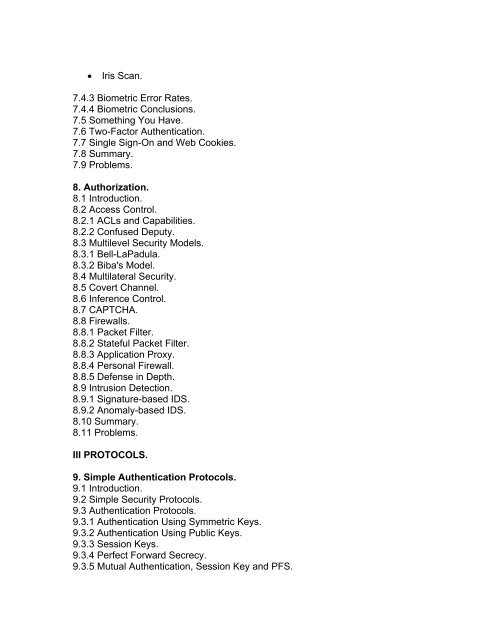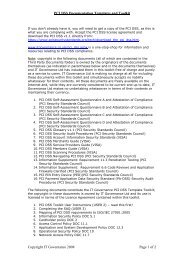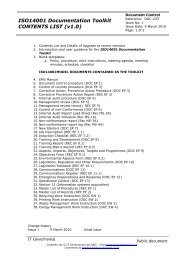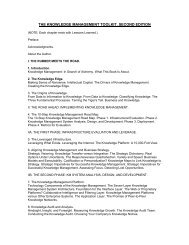INFORMATION SECURITY: PRINCIPLES AND PRACTICE
INFORMATION SECURITY: PRINCIPLES AND PRACTICE
INFORMATION SECURITY: PRINCIPLES AND PRACTICE
You also want an ePaper? Increase the reach of your titles
YUMPU automatically turns print PDFs into web optimized ePapers that Google loves.
• Iris Scan.<br />
7.4.3 Biometric Error Rates.<br />
7.4.4 Biometric Conclusions.<br />
7.5 Something You Have.<br />
7.6 Two-Factor Authentication.<br />
7.7 Single Sign-On and Web Cookies.<br />
7.8 Summary.<br />
7.9 Problems.<br />
8. Authorization.<br />
8.1 Introduction.<br />
8.2 Access Control.<br />
8.2.1 ACLs and Capabilities.<br />
8.2.2 Confused Deputy.<br />
8.3 Multilevel Security Models.<br />
8.3.1 Bell-LaPadula.<br />
8.3.2 Biba's Model.<br />
8.4 Multilateral Security.<br />
8.5 Covert Channel.<br />
8.6 Inference Control.<br />
8.7 CAPTCHA.<br />
8.8 Firewalls.<br />
8.8.1 Packet Filter.<br />
8.8.2 Stateful Packet Filter.<br />
8.8.3 Application Proxy.<br />
8.8.4 Personal Firewall.<br />
8.8.5 Defense in Depth.<br />
8.9 Intrusion Detection.<br />
8.9.1 Signature-based IDS.<br />
8.9.2 Anomaly-based IDS.<br />
8.10 Summary.<br />
8.11 Problems.<br />
III PROTOCOLS.<br />
9. Simple Authentication Protocols.<br />
9.1 Introduction.<br />
9.2 Simple Security Protocols.<br />
9.3 Authentication Protocols.<br />
9.3.1 Authentication Using Symmetric Keys.<br />
9.3.2 Authentication Using Public Keys.<br />
9.3.3 Session Keys.<br />
9.3.4 Perfect Forward Secrecy.<br />
9.3.5 Mutual Authentication, Session Key and PFS.













